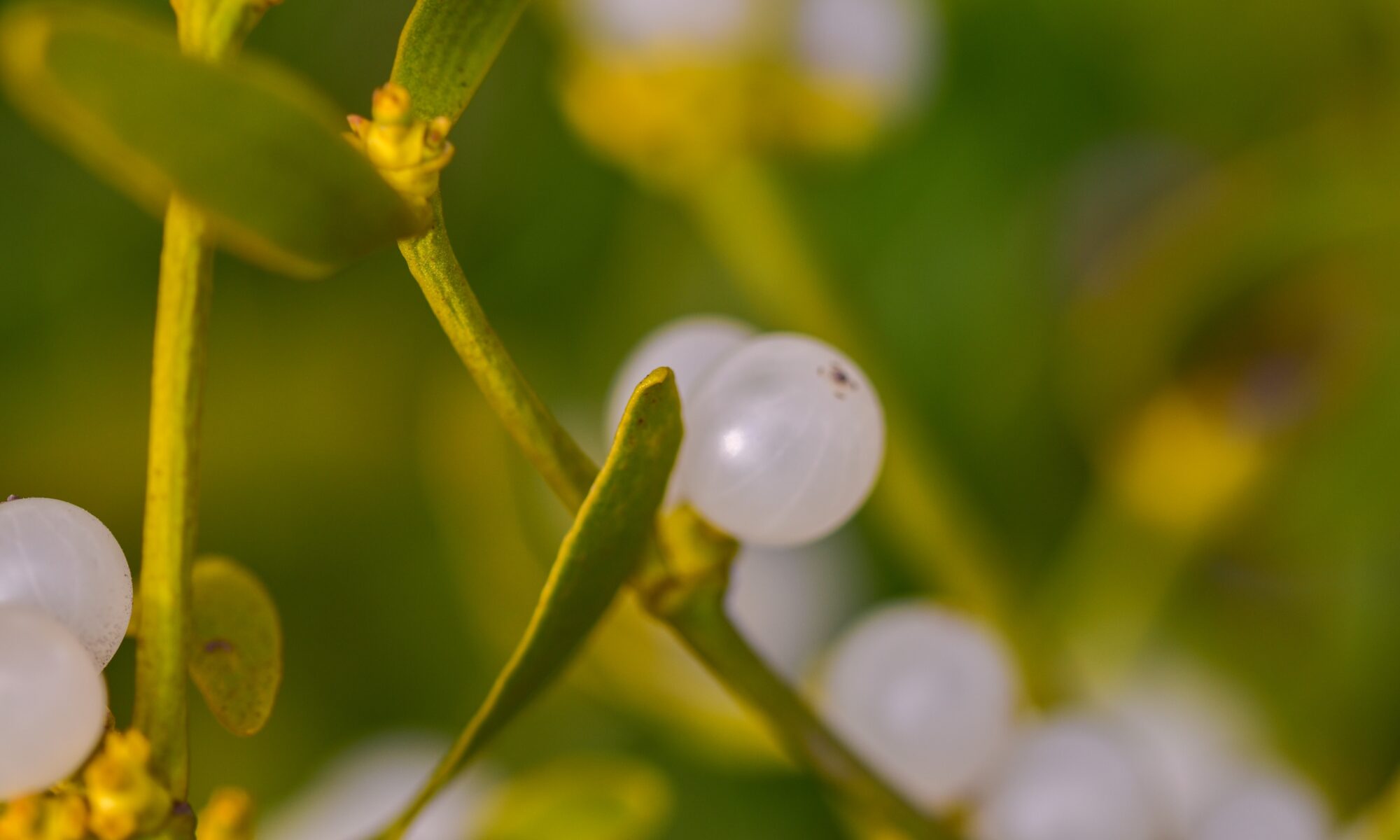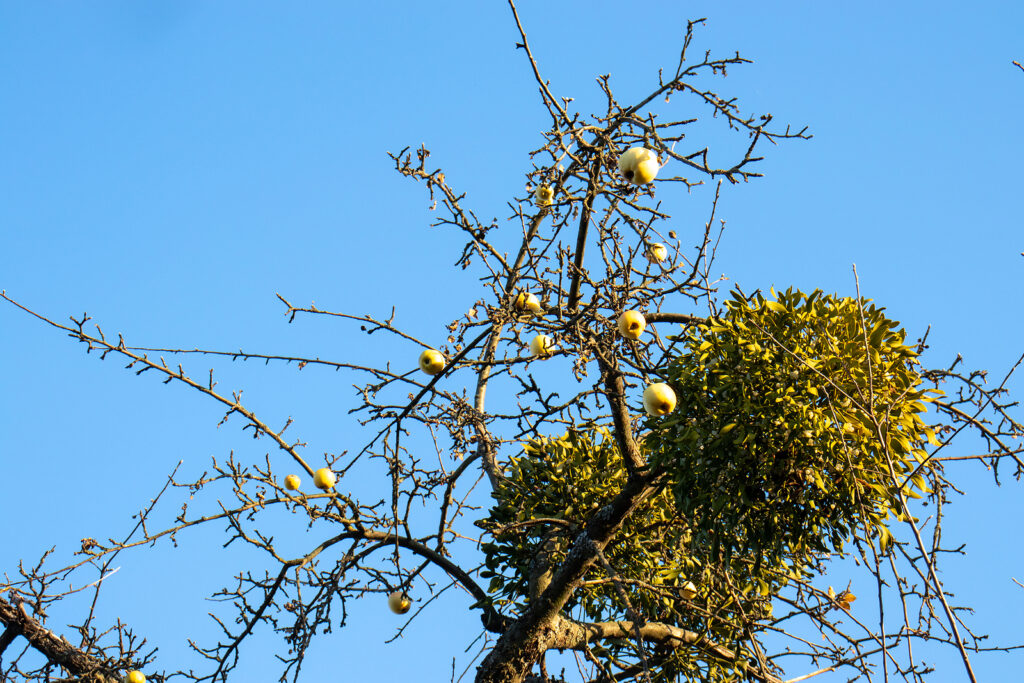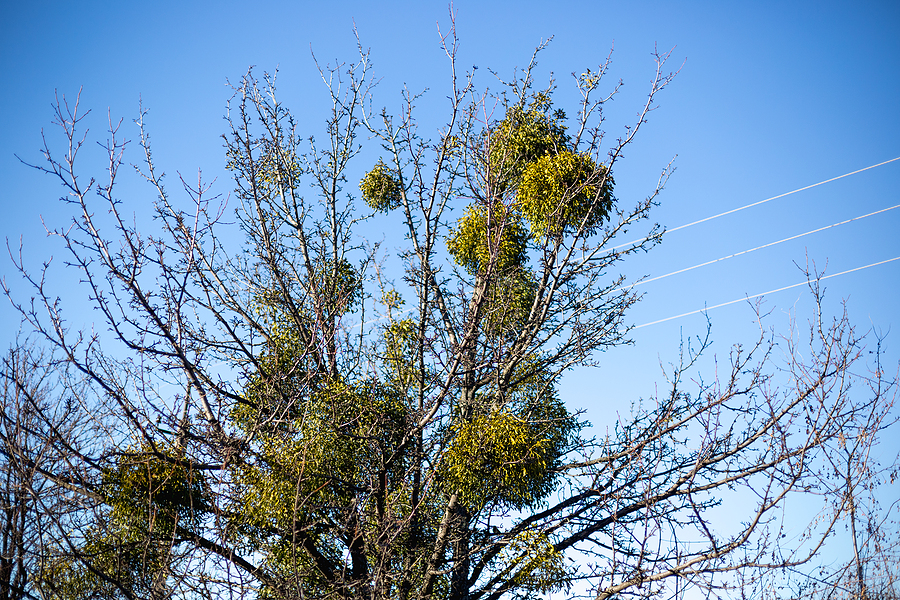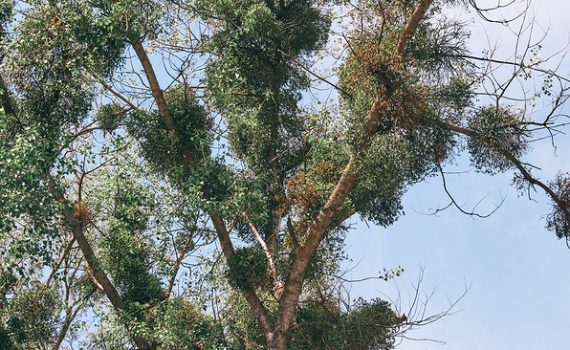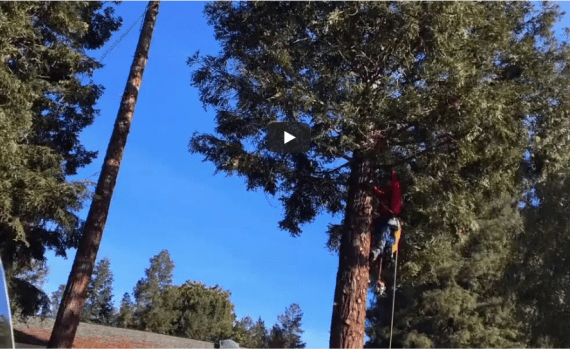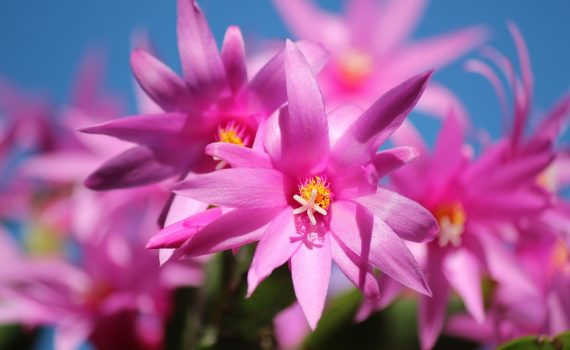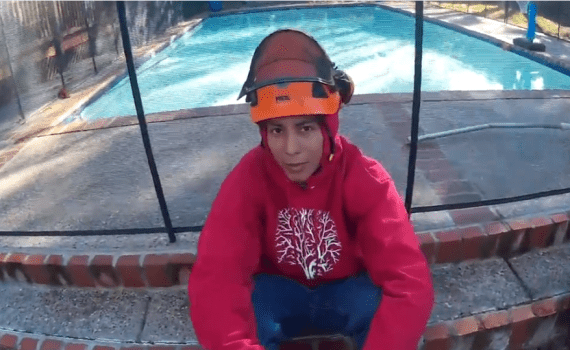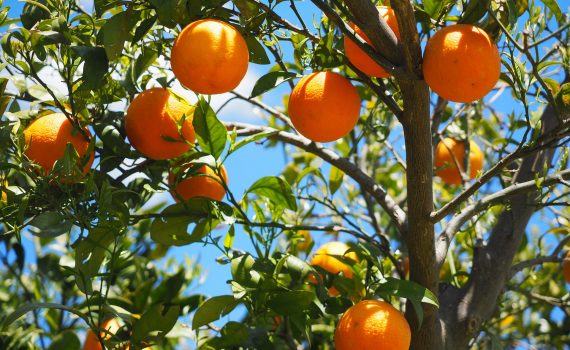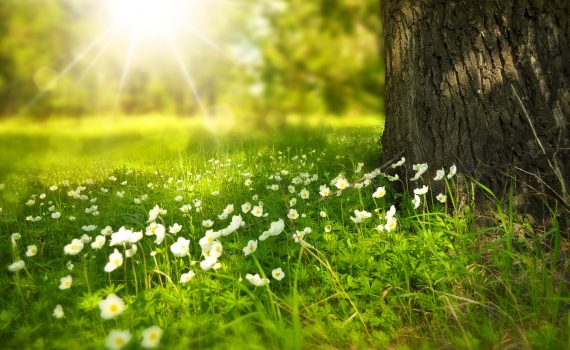Sometimes, unwanted guests find their way into our winter wonderlands – mistletoe. Often romanticized, this parasitic plant is far from a symbol of love for your garden. In this blog, we’re diving deep into the world of mistletoe removal – the why, the how, and the when.
Why Mistletoe Is More Than Just a Kiss Catalyst
Mistletoe, a seemingly harmless holiday decoration, is actually a parasitic plant that can wreak havoc on your trees. It saps essential nutrients, weakening the host over time. This can lead to stunted growth, poor health, and even the death of your beloved trees.
The Hidden Dangers
- Nutrient Theft: Mistletoe roots, known as haustoria, penetrate deep into the tree’s branches, stealing water and nutrients.
- Structural Damage: Over time, the weight and growth of mistletoe can cause branches to break, posing a safety hazard.
- Disease and Pests: The plant can attract pests and become a breeding ground for disease, further compromising tree health.
The Legends and Myths Surrounding Mistletoe
Mistletoe, beyond being a garden nuisance, is steeped in history and mythology, contributing to its romantic symbolism. To fully understand our fight against this parasitic plant, let’s delve into the fascinating legends that have shaped its cultural significance.
Ancient Beginnings
- Druids and the Winter Solstice: The ancient Druids saw mistletoe as a symbol of vivacity and fertility due to its ability to flourish in the dead of winter. They believed it brought good luck and warded off evil spirits, especially when cut from an oak tree.
- Norse Mythology: In Norse legends, mistletoe is bittersweet. The plant was used by Loki, the god of mischief, to make an arrow that killed Baldr, a beloved god. After Baldr was resurrected, mistletoe was placed under the guardianship of the goddess of love and rebirth, Frigg, transforming it into a symbol of love and forgiveness.
Romantic Connotations
The romantic associations of mistletoe can be traced back to these ancient times. Here’s why it’s considered a symbol of romance and affection:
- Frigg’s Promise: In Norse mythology, Frigg promised to kiss anyone who passed beneath mistletoe as a sign of gratitude for the return of her son, Baldr. This gesture of love and peace laid the foundation for the tradition of kissing under the mistletoe.
- Victorian Era Adaptation: During the Victorian era, the mistletoe kissing tradition became popular. It was said that a girl standing under the mistletoe could not refuse a kiss. Such a kiss could mean deep romance or lasting friendship and goodwill.
- Symbol of Fertility: Due to its year-round greenery and the white berries resembling pearls, mistletoe was often seen as a symbol of fertility and vitality, further cementing its romantic connotations.
Mistletoe in Modern Times
Today, mistletoe continues to be a staple of holiday decor, encapsulating the essence of love, forgiveness, and renewal. While we might strive to protect our trees from its grasp, we can’t help but acknowledge the rich tapestry of myths and legends that make mistletoe a beloved part of holiday traditions.
And while mistletoe might be a symbol of love and romance, remember, in the garden, it’s a love story your trees can do without.
How to Spot and Tackle Mistletoe
Early Detection Is Key
The sooner you spot mistletoe, the easier it is to manage. Look for its distinctive green, forked branches and white berries. It often thrives in the upper branches, so keep your eyes peeled.
Removal Techniques
Manual Removal
- Pruning: The most effective method. Prune the infested branches, cutting at least a foot below the mistletoe attachment to ensure the removal of the entire haustorium.
- Peeling: For smaller infestations, peel the mistletoe off with your hands, wearing gloves to protect against the plant’s toxic berries.
Natural Solutions
- Tree Health: A healthy tree is less susceptible to mistletoe. Regular watering, mulching, and fertilizing can boost your tree’s defenses.
- Beneficial Wildlife: Encouraging birds that feed on mistletoe berries can help control its spread.
When to Act
Timing is crucial. Winter, when trees are dormant and mistletoe is easily visible, is the best time for removal. Regular checks throughout the year are also recommended.
Preventive Measures: Stopping Mistletoe Before It Starts
While removal is key once mistletoe has taken hold, prevention is an even more powerful tool. Proactive measures can greatly reduce the likelihood of a mistletoe infestation. This approach involves two primary strategies: vigilance and regular maintenance, and creating an environment less conducive to mistletoe growth.
Vigilance and Regular Maintenance
The first line of defense against mistletoe is regular observation and maintenance of your trees.
- Inspect Regularly: By conducting regular tree inspections, you can spot signs of mistletoe early on. This early detection is crucial as it allows for more manageable and less invasive removal methods.
- Proper Pruning: Professional pruning is not just about aesthetics; it’s about health. Seasonal pruning by skilled arborists can help maintain the vitality of your trees, making them less inviting for mistletoe infestation.
Creating a Hostile Environment for Mistletoe
In addition to regular maintenance, creating conditions that are unfavorable for mistletoe can further protect your trees.
- Tree Wrapping: After pruning, wrapping the cuts with specially designed tree wraps can discourage mistletoe seeds from successfully attaching and growing.
- Chemical Treatments: While the use of chemicals should be a last resort, certain herbicides can effectively prevent mistletoe infestation when used judiciously and under expert guidance.
By combining these strategies, you can significantly reduce the likelihood of mistletoe taking over your trees. Regular maintenance, coupled with proactive measures, can keep your trees healthy and mistletoe-free.
The Bigger Picture: Why Tree Health Matters
A tree free from mistletoe is not just about aesthetics. It’s about:
- Longevity: Healthy trees live longer.
- Safety: Weak branches can be a hazard.
- Ecology: Healthy trees contribute more to the ecosystem.
When DIY Isn’t Enough: Seeking Professional Help
Sometimes, the situation calls for the experts. Professional arborists, like those at Sexy Trees, have the knowledge, tools, and experience to effectively and safely handle mistletoe infestations.
The Sexy Trees Advantage
Expert Assessment: Our team can accurately diagnose the extent of the infestation.
Safe and Efficient Removal: We use the best practices to ensure your tree’s health and safety.
Preventive Strategies: We don’t just remove; we advise on how to prevent future infestations.
Don’t let mistletoe take over your trees. Act now to ensure their health and safety. Whether you choose a DIY approach or seek professional help, the key is to act quickly and effectively.
For those tough cases, or if you’re unsure, reach out to Sexy Trees – where your tree’s health is our top priority. Contact us today for a consultation and let us help you keep your garden mistletoe-free!
Remember, a healthy tree is a happy tree, and a happy tree makes for a happy garden. Let’s work together to keep those uninvited holiday guests at bay!
 Bringing Sexy Back Into Your Yards
Bringing Sexy Back Into Your Yards 

